When I was young, I was given a Tonka toy truck. Sold as being were indestructible, a four year old me took this as a challenge and duly tested this out by placing said truck under my dad’s car. One punctured tyre and slightly bent toy later, I developed a fascinated with ruggedised objects. And so, when I came across a Konica Genba Kontaku 28WB (“Genba Kontaku” is Japanese for site supervisor) camera during my latest Shinjuku Camera Shop Walk in Tokyo, I jumped at the chance to get one.
Background
Between 1988 to 2001, Konica released a series of ruggedised cameras such as the Genba Kontaku aimed at the Japanese construction industry. Its basic purpose was to record construction work in, often, harsh conditions. To this purpose, these cameras were designed to be waterproof (JIS protection grade 4-8), dust, sand proof and anti-shock impact resistant.
As a family of cameras, they included models with 28mm and 35mm fixed focal length, 40mm-60mm switchable dual lens and a 28-56mm zoom lens. They were mainly available in dark green, dark blue or dark grey utilitarian colours. The later ECO models were also available in dark or light orange.

All models had a common and basic operation and display which consists of a Power button (On, Off), Mode Button – Auto Flash (default mode), Flash On, Flash Off, Self Timer, Infinity Focus and a recessed Rewind button. Late models have a +2 EV snow/backlight compensation mode..
All models run off 6V 2CR5 and are DX coded. They all also had a quaint “This Camera Belongs To” name plate on the top of the camera.
Aside for the addition of a +2 EV compensation to the later models, there were models introduced with remote controls, ‘panorama’ blanking plates and low consumption flash units (ECO models).
Konica were certainly not the only camera manufacturer to tap into the construction industry with a “Work Record” camera such as the Genba Kontaku 28 WB. Fuji and Ricoh also released cameras aimed at the construction industry with unique features of their own.
The Guv
Meet The Guv (“Genba Kontaku” is a bit of a mouthful for non Japanese speakers). For the non-British readers, the term ‘guv’ or governor is a name usually referring to a person in a supervisory position. Whilst this may not be true across the board, it’s certainly true for the British construction industry and therefore I’m sticking to this moniker.
The Guv is a dark blue Konica Genba Kontaku 28WB with a 28mm f3.5 lens (5 lenses in 5 groups) and minimum focusing distance of 0.5 meters. The shutter has speeds of 1/4 to 1/280 sec. It uses a CdS based metering cell with a range of 5.5 to 16.5 EV (ISO 100)

My Konica Genba Kontaku 28WB has a data back which is powered separately by a CR2025 battery. Strange, however, for a camera built like a tank; the maximum date you can set the data back to is 2019. I’m certain that my camera will last way beyond then.
The Genba Kontaku 28WB is 45mm deep by 80.5mm wide and 49mm tall. Weighing in at 350g (including battery), it’s a chunky by light camera. It’s grippy enough for my large hands and feels comfortable to hold. I can imagine that it’s easy to hold with gloves on too. What’s not so good though is the shutter button. It’s a rubber sealed nipple or nubbin which is just about tactile enough to be felt with naked fingers. I can see that it may not be substantial enough for the wearer of gloves.
Access to film chamber involves twisting a knob on the left hand side of the camera body to release the camera back. Whilst this is safer than most of the methods for releasing the film back, I cannot see how this would be easy for a person using gloves to operate.
Loading the film is fairly intuitive, just pull the film cartridge leader to the arrow indicated in the film chamber (in both English and Japanese) and close the back. There really isn’t much more to fiddle with, it is very basic in operation, given that it is meant to record work.
The Genba Kontaku’s viewfinder continues the minimalist trend by only having a single frame line with parallax correction indicators. There are 2 LED lights which light up just outside of the viewfinder, within the peripheral of your view, to indicate focus lock/close proximity warning and flash charging/camera shake.
And that’s pretty much it. Point and shoot doesn’t get more fundamental
Usage
With no controls to speak of, save over riding the flash, you would imagine that the there’s not a lot to describe in its usage and you would be right. Konica have kept the clever stuff pretty much inconspicuous but it all adds to the shooting experience with the Genba Kontaku.
First of all, there is a haptic/audio feedback system. This system kicks in as soon as a battery inserted into the camera with a 2 second vibration and “grinding” noise. When taking a picture, the focus is confirmed by a loud “clunk” and vibration. This threw me out the first few times I used the camera as I assumed that the “clunk” came from the shutter being triggered.
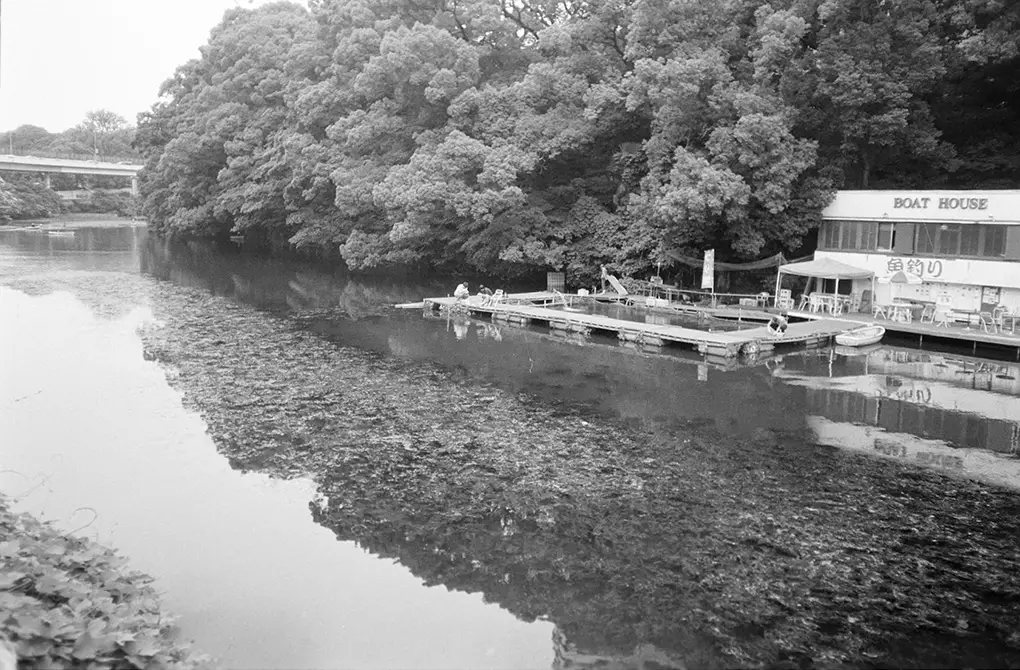
The Genba Kontaku’s focus lock is both fast and accurate, which is why I mistook the “clunk” from its confirm as the shutter being triggered. I tried it in a variety of situations including low light, highly reflective surfaces and shooting through glass and in manages to do a good job of it.

I also tried out long exposure/low light and backlighting with the Genba Kontaku. Long exposure was a bit challenging as the minimum shutter speed is ¼ second. In all the tests conducted, the camera managed to capture images which were adequately exposed. Likewise, with backlighting. The couple of shots I shot to test the metering out the backlight did not trip it up.
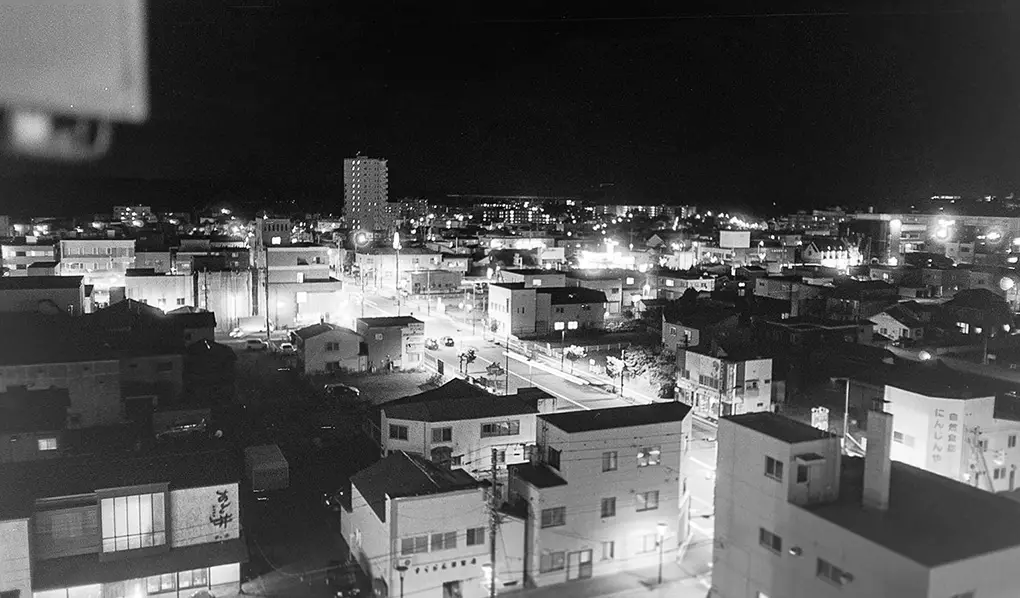
Results
I got the Konica Genba Kontaku 28WB on a particularly dreary day in Tokyo and this influenced my choice of film as I did not want to wait for a sunny day to start try the camera out. The other factor was the fact that the lens on the camera is supposed to be contrasty, with these in mind I settled for the cheapest 400ASA Black and White film I could that wasn’t HP5. And this happened to be a Seagull 400 by Oriental. I hadn’t used this film before, but am familiar with the brand as I used Oriental brand B&W photographic paper back when I used to print my own photos.
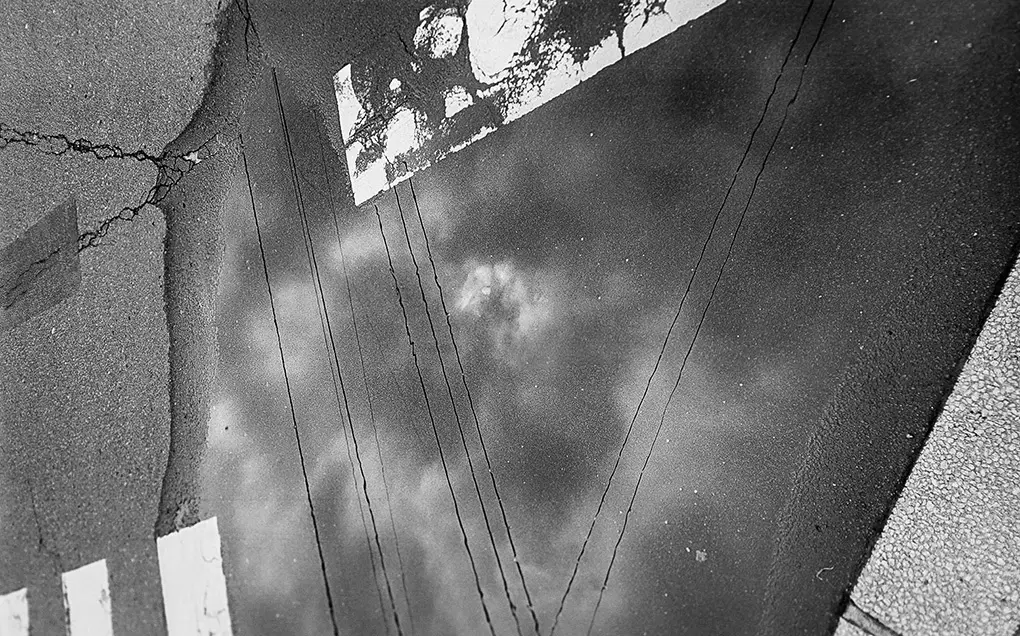
Quick Disclaimer: I ‘scanned’ the negatives using my digital camera and a good macro lens, using a makeshift negative holder. I then focus stacked and blended it in Photoshop. It is not as good as using a good scanner or lab scanning. It’s also the first time I’m doing this so there’s also room for improvement. I have, though, checked the negs with a loupe and it’s sharp where it should be.
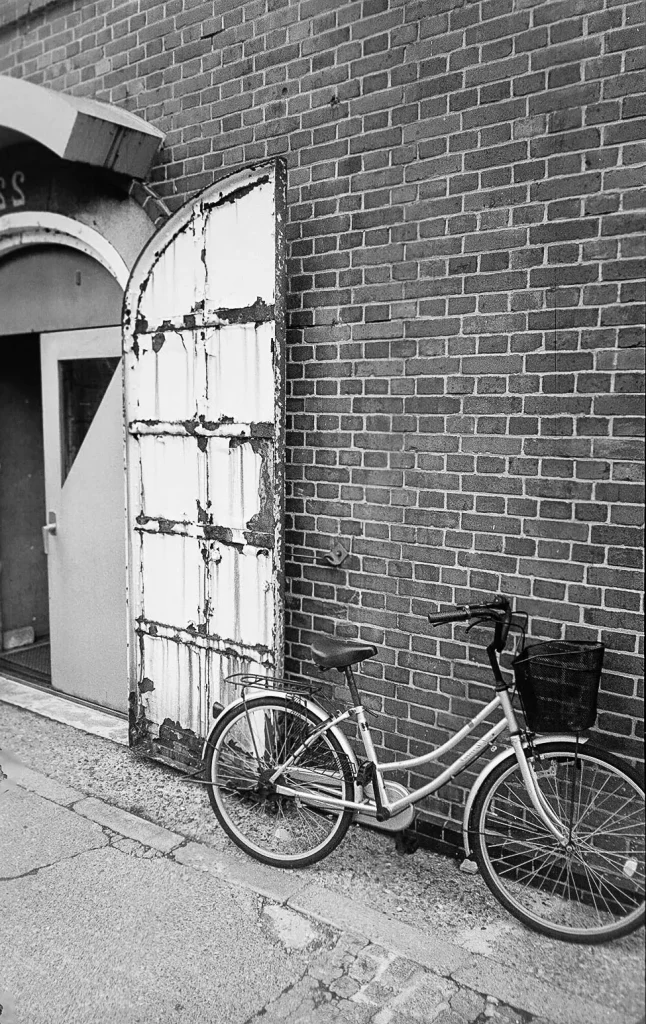
The first nice surprise about the Konica Genba Kontaku 28WB is the performance of its 28mm lens. It’s a work recording device and as such it’s lense is optimised to minimise distortion, which is very rare for a 28mm let alone one which is in a compact camera. It is also more of a surprise because the viewfinder on the camera has very pronounced barrel distortion.
It is not lacking in sharpness either. Not bitingly so, but certainly what I would consider to be above average. And this sharpness is across the frame, even wide open.
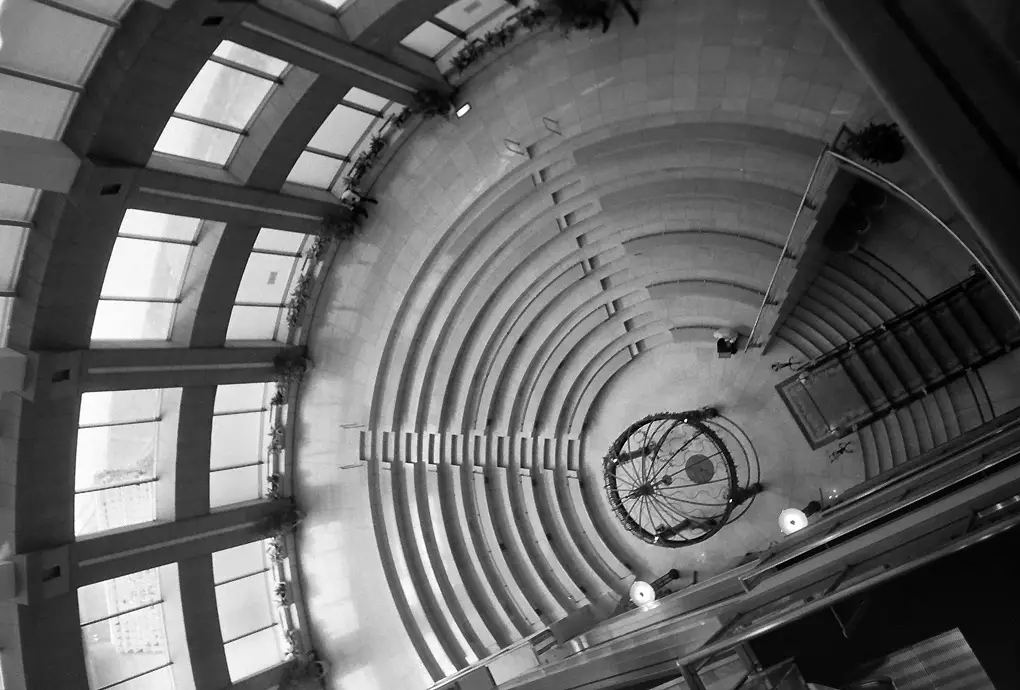
Parting thoughts
This is just a quick (albeit lengthy) review based on one roll, and not a summary or conclusion. I’m eager to try a roll of colour film on it, something nice and warm like Kodak stock. Next on the list would be to take advantage of the low distortion lens and do a bit of architectural photography with High Contrast or Infrared film.
But what I am certainly sure of is that I like the Konica Genba Kontaku 28WB, and I had not expected to. I’m not a huge fan of point and shoots. And when I do use one, I’d like there to be more control of the flash and at least some form of exposure compensation, even if it’s a way of altering the ISO setting to fool the meter. Given its size, the camera is also not discreet and the few shots I tried taking on the street without the aid of the viewfinder resulted in awkward framing and perspective (it’s a 28mm after all), but may just be down to my own inexperience.

Sure it’s clinical, lacks controls and is a bit bulky. But, underneath all this, I can see a camera which has been optimised TO take clinical photos in a consistent manner under challenging conditions. Throw in ruggedized chuckability, waterproofing and (in my opinion) good looks; I reckon I’ll be shooting this for some time to come. It’s also cheap as chips, with working versions being found in bargain bins for as little as 600 yen (GBP4.50). I missed out on Hamish’s Leica M4 contest but I’ll certainly be prepared if he has a M6 competition…
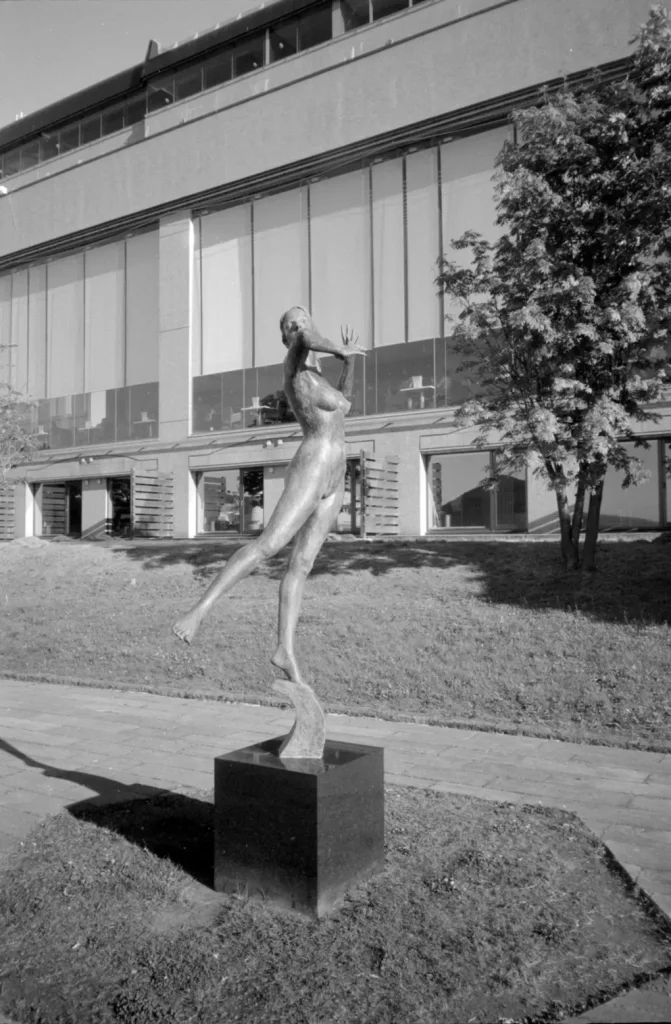
My fascination with the Konica cameras goes beyond the fact that they are ruggedised. There’s the Historic and Social aspects of this camera too. As far as I have discovered so far, Konica pretty much defined if not created this category of cameras, which is not really know outside of Japan. And by this, I don’t mean ruggedised or weatherproof cameras, those have been around since the 70’s at least. But the creation of a dedicated ‘Work Record’ camera with subtle but dedicated improvements aimed to aid and improve practical photo taking by construction workers is unique and evolutionary. The first versions of these work cameras were little more than ruggadised versions of Konica’s commercially available weatherproof cameras (MR.640 and MS40).
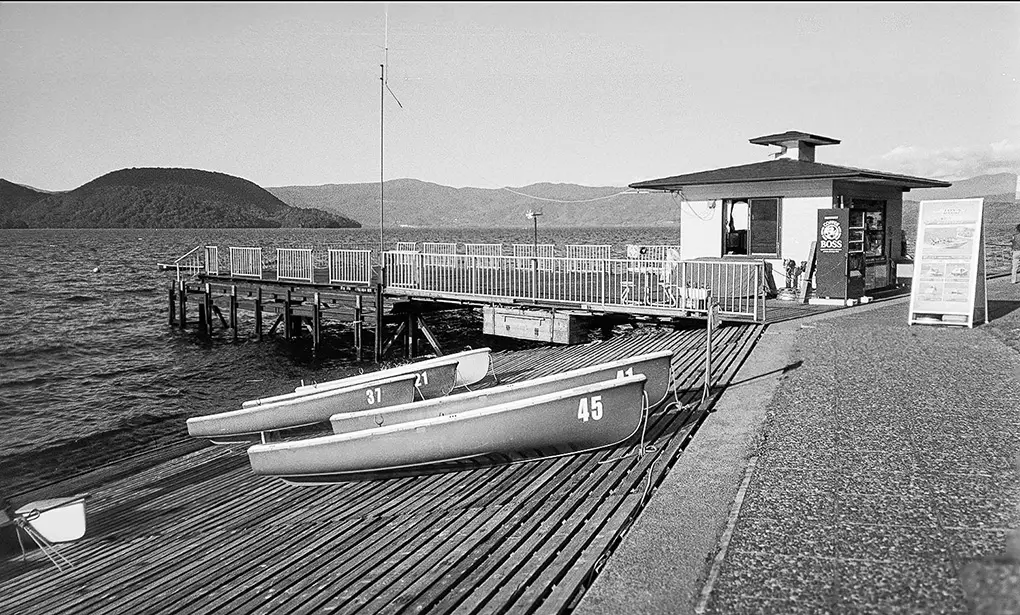
Socially, these Genba Kontaku cameras were only ever issued to the foreman and must have been a bit of a status symbol within the construction industry. I can see it being wielded both to produce proof of a job well done, a record of herculean efforts by construction crews eager to scrape the skies of Tokyo, as much as a tool for the final group photo in front of the final results. A lasting memory of achievements before breaking off on new endeavours.
Useful links:
Forum thread at Filmwasters
Flickr Group images
Another forum posting, number of elements issue resolved at bottom
A forum with a little info
Japanese fan article (in Japanese language)
Russian collector’s article (in Russian language)
Russian collector’s article (in Russian language)
Share this post:









Comments
Hamish Gill on Konica Genba Kantoku 28WB Review – “The Guv” – by Ray Yee
Comment posted: 06/08/2016
Comment posted: 06/08/2016
Comment posted: 06/08/2016
Comment posted: 06/08/2016
Comment posted: 06/08/2016
Terry B on Konica Genba Kantoku 28WB Review – “The Guv” – by Ray Yee
Comment posted: 06/08/2016
Comment posted: 06/08/2016
Comment posted: 06/08/2016
Ray Yee on Konica Genba Kantoku 28WB Review – “The Guv” – by Ray Yee
Comment posted: 07/08/2016
Ken Hindle-May on Konica Genba Kantoku 28WB Review – “The Guv” – by Ray Yee
Comment posted: 08/08/2016
Ken Hindle-May on Konica Genba Kantoku 28WB Review – “The Guv” – by Ray Yee
Comment posted: 17/10/2016
Comment posted: 17/10/2016
Alana Spencer on Konica Genba Kantoku 28WB Review – “The Guv” – by Ray Yee
Comment posted: 23/05/2017
Comment posted: 23/05/2017
Comment posted: 23/05/2017
Comment posted: 23/05/2017
Neilson on Konica Genba Kantoku 28WB Review – “The Guv” – by Ray Yee
Comment posted: 07/06/2018
On the negative side, it shares a couple of things I found annoying about the Olympus Mju-ii/Stylus Epic. First, you can't see where the camera is focusing. Second, the flash wants to fire a lot and you have to disable it each time you turn the camera on. The Nikon Action Touch solves the latter problem by having a manual on/off switch for the flash.
On the positive side, it's much quieter than either the Stylus Epic or Nikon Action Touch. I could see using this as a street photo camera as opposed to the other two, which are way too loud. I also like the 28mm focal length.
I'm getting my roll back today and excited to see the results!
Rufty-tufty film camera review – Fup Duck Photography on Konica Genba Kantoku 28WB Review – “The Guv” – by Ray Yee
Comment posted: 15/08/2019
Konica Wide 28 & Kodak Tri-X | Jamie Furlong on Konica Genba Kantoku 28WB Review – “The Guv” – by Ray Yee
Comment posted: 31/08/2022
Bob Janes on Konica Genba Kantoku 28WB Review – “The Guv” – by Ray Yee
Comment posted: 05/10/2022